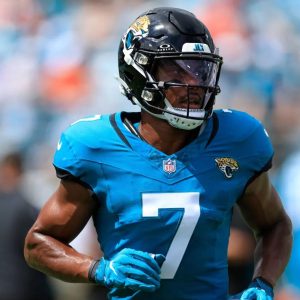Every year around this time, days before the NFL draft, New Orleans Saints general manager Mickey Loomis and his staff begins to research what it would take to trade 10 spots in either direction.

This provides a point of reference so when the actual event rolls around, the New Orleans Saints have at least some idea of what it would take to facilitate a deal. In that span, Loomis will check in with other executives around the league to gauge whether they want to move up or down.
But for all the studying and information gathering, some responses pique Loomis’ interest more than others.
“It’s hard for me to keep saying that I’m willing to trade back,” Loomis said, “and then I haven’t done it for quite some time.”
Seventeen years to be exact.
By now, trading up — not down — has been a hallmark of Loomis’ 22-year tenure as the Saints’ general manager. The executive hasn’t traded back in the draft since 2007 and have made 26 trades to move up since then. And at his annual pre-draft press conference Tuesday, Loomis joked that as much as he can talk about the Saints being willing to trade down for a change, he ultimately has a track record that proves otherwise.
Loomis said he believes the strategy to move up has been successful for the franchise.
“I must think it’s pretty good if I’m doing it, right?” Loomis said. “Yeah, I feel like it’s been good for us, yes.”
Loomis’ assertion, of course, can be debated. There have been high-profile draft trades that arguably haven’t worked out for the Saints, such as when they moved up to take pass rusher Marcus Davenport in 2018 and tackle Trevor Penning in 2022. But then again, other draft-day trade ups yielded great results for the franchise, like 2022’s move to grab wide receiver Chris Olave and 2017’s deal to land running back Alvin Kamara.

Loomis said “there are cases” when trading down makes sense, particularly to land more draft capital. The offers that New Orleans has received over the years would have moved the team “too far back,” he said.
“If you move back two or three or four spots, probably the level of player is similar,” Loomis said. “If you’re moving back eight to 10, I think oftentimes you’re dropping down a class. If you believe in your board, you believe in the evaluations that your staff have done, then it’s just hard for me to grasp getting a lesser player talent-wise. I really believe in the evaluation process that we do, and that’s what makes it more difficult.”
If there were a year that might entice the Saints to trade back, it could be this one. The Saints have nine picks, but seven of those come between Rounds 5-7. New Orleans has only two selections in the top 149 picks.
Loomis said the Saints aren’t thinking about the large gap that they have between picks No. 45 and No. 150 “right now.” He said if the franchise wants to explore acquiring selections that will have them draft in the third or fourth rounds, such deals won’t happen until later. He said they’ll use Friday evening and Saturday morning to make plans when Days 2 and 3 of the draft take place.
“Part of that depends on who are the players available,” Loomis said. “Do we really want to move up? When you have four [fifth rounders] that presents an opportunity to take a couple of those and bump it up. We won’t be thinking about that until we know who the players are available.”
In a way, Loomis stayed perfectly on brand with his answer. Rather than entertaining the possibility the Saints could trade back from No. 45 to gain more assets, he talked about a scenario in which his team would package several of the four fifth-round picks the team has to move up.




